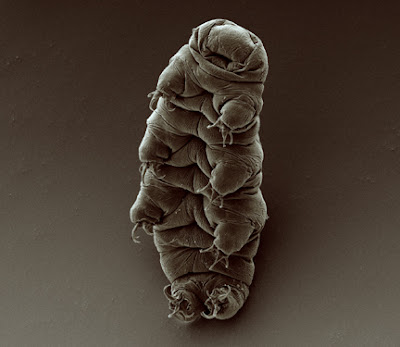Living in the Extreme
Creatures have adapted and survive in every habitat on Earth. Dr Anjani Ganase looks at some of the strange organisms that thrive in extreme conditions.
Extremophiles are organisms that are adapted to living in the most inhospitable places on earth: in places of extreme cold or hot temperatures, under acidic or alkaline conditions, even in places under extreme pressure, buried under rocks or in the deep ocean. Such organisms have developed physical and behavioural traits that permit them to survive and to thrive in places that are devoid of other competing life.
DESERT RAINBOW FISH native to Australia, is a rare species of fish found in arid and semi-arid environments. They live in schools and grow to ten centimetres in length; and are iridescent in colour. They are adapted to living in small pockets of slow-moving water, such as watering holes and ephemeral streams (bodies of water that remain for a short period after flooding), lakes and stock dams. These pockets of water in the Australian desert may only carry small populations of fish species but this does not prevent them from occurring in large numbers of watering holes throughout central Australia. It is thought that the long-term survival of species in such isolated conditions may result in genetic die off in these small oases, but according to the researchers from Flinder’s University, they find a way. They can survive through drought conditions, and they are able to time breeding with the next flood event. The eggs are laid on the roots of vegetation or wetland plants or anything else in the water that they can adhere to. They hatch a week later. However, flood events are unpredictable, and it is remarkable that they can survive such uncertainties. Adaptations include the ability to detect changes in water salinity, flow and turbidity. As climate change is resulting in more desertification, these creatures may even be able to expand their range.
(CC BY-SA 2.0 - https://creativecommons.org/licenses/by-sa/2.0/deed.en)Adult
tardigrade. Photo by The Goldstein Lab
CUDDLY WATER BEARS known as Tardigrades (literally means “slow stepper”) belong to a group of invertebrates made famous for their cute way of swimming through water. They grow up to 1 mm in length - yes, they are microscopic - and are found in almost all habitats on the planet yet we know so little about them. They can be found in temperatures as low as -200 C to over 150 C, in salty and fresh water, as well as under considerable pressures. They live in water and seem to survive in even the smallest water droplets. Tardigrades feed on biological matter including plant and animal materials, such as algae and amoebas. They are capable of surviving harsh conditions because of their ability to undergo cryptobiosis, a death-like state in which their metabolism is halted. They can do this in freezing conditions, changes in salinity, in the absence of oxygen and even in the absence of water. Scientists have been able to revive tardigrades found on dried out moss samples that were stored in a museum for over 100 years. They are the ultimate survivors.
Pompeii Worm. Photo by The National Science Foundation.
POMPEII WORMS are another example of extremophiles as they thrive around deep-sea hydrothermal vents. Deep-sea hydrothermal vents are found at 1,500 - 3,500 metres under the sea and are flushed by super-heated water temperatures up to 105 C expelled from the vents. The worms’ bodies are only able to survive up to temperatures of 55 C but they have a protective bacteria layer that covers their bodies and regulates the high temperatures by redistributing the heat away from the worm’s body. The waters around the vents are nutrient rich because of the process of chemosynthesis carried out by bacteria that uses the mineral rich water expelled from the earth under extreme temperatures to create organic matter in the way that plants use sunlight to grow. The worms filter feed on the bacteria rich waters for their food.
West
African Lungfish. Photo by Mathae (CC
BY-SA 3.0 - https://creativecommons.org/licenses/by-sa/3.0/deed.en)
WEST AFRICAN LUNGFISH is a freshwater fish found in the rivers and swamps of west and south Africa. These creatures are considered to be living fossils because they have been around for 400 million years with no physical changes. Lungfish live in wetlands or waterways that may disappear during periods of drought. As the name suggests, when the water becomes low in oxygen, it relies on its two lungs to breathe air. When the water dries up, they are also able to create a mucous cocoon to survive. They can hibernate by burying themselves in the soil at the bottom of a waterway and can live this way for as long as necessary. Scientists have recorded hibernation of up to four years. Their inflated lungs along with their hind limbs can also be used to propel themselves through the water. Lungfish are omnivores that feed on fish, frogs and tree roots. When they breed, the female will lay eggs and the male will guard the hatchlings for two months. During this time, the fish larvae will undergo transformation from using gills to lungs.
References
Lintermans, M. 2007, Fishes of the Murray-Darling Basin: An introductory guide.
https://serc.carleton.edu/microbelife/topics/tardigrade/index.html
https://www.mbari.org/products/creature-feature/pompeii-worm-landing-page/
https://www.oregonzoo.org/discover/animals/african-lungfish





